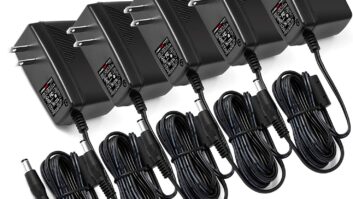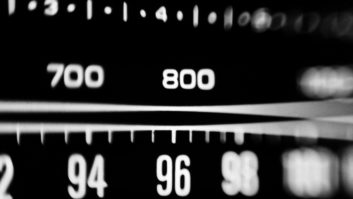Radio World offers a recurring series of Q&As with Richard Strickland of RF Safety Solutions, who has presented numerous public and private seminars on RF radiation safety and has written widely on the topic. The series is archived at radioworld.com.
Question: The safety of cell phones is being called into question again with the head of a prominent cancer research institute issuing a warning. Can you offer any information regarding cell phone safety?
Answer: The well-publicized recent warning to limit cell phone use from Dr. Ronald Herberman, director of the University of Pittsburgh Cancer Institute, has a great deal of merit.
The safety of cellular phones has been debated for years. Dr. Herberman is taking the position that it is better to be safe and take action now because it takes years to get answers from science.
The following covers well-known facts about cellular phones and the effects of radio frequency (RF) energy on the body.
RF exposure limits
The major worldwide whole-body RF exposure limits are similar and are all based on a common set of biological data. The human body functions as an antenna. The better the antenna is, the more energy is absorbed. Your height is the main factor that determines how effective an antenna you are at a given frequency.
In most cases, we are concerned with the total amount of energy absorbed by the body, which is referred to as whole-body heating. In some cases, we are concerned with certain parts of the body being heated.
This is what happens when a cell phone is held close to your head: It causes the head (and brain) to heat. RF exposure is quantified in terms of Specific Absorption Rate (SAR), which is measured in Watts per kilogram of body mass (your weight).
This approach allows us to assess the exposure of all people, research animals and even parts of the human body. Your total weight is used when considering whole-body heating, while only grams of brain matter are considered when looking at the heating effects of a cell phone.
The whole-body limit for all the major standards, such as the Federal Communications Commission’s limit for Occupational/Controlled exposure, is 0.4 Watts per kilogram. The FCC’s exposure limit for General Population/Uncontrolled exposure, often cited as the public limit when referring to such things as cell sites, is only one-fifth of that limit, or 0.08 Watts per kilogram. As with all standards, a safety factor is built in. For RF energy, the established upper limit of tolerance is 10 times higher than the occupational limit.
Cell phone exposure limits
The SAR limit for cell phones is 1.6 Watts per kilogram. This limit for the head is four times higher than the occupational limit for the whole body and 20 times higher than the public limit for the whole body.
Exposure from use of cell phones
The amount of RF energy that you absorb depends on several factors. The two most important factors are:
- The intensity of the RF field to which you (or parts of your body) are exposed;
- How efficient an antenna you (or parts of your body) are at that frequency
From a whole-body exposure point of view, adults make the best antennas in the frequency range of about 50 MHz to 108 MHz, depending on how tall they are. These frequencies are used for TV Channels 2 to 6 and FM radio.
Your head, which is much smaller, makes a very good antenna in the frequency range of about 800 to 900 MHz. This is the same frequency band used by cellular phones.
The other two bands commonly used for personal phones — PCS and GSM — operate from roughly 1,800 to 2,000 GHz, where a person’s head is a somewhat less efficient antenna.
The two most important factors that determine how much energy your head absorbs when using a cellular phone are:
- How close the phone is to your head;
- How much power the cell phone is transmitting
If a person is holding the phone away from his or her body such as when texting or when using a headphone (wired or Bluetooth), the amount of energy absorbed is immeasurably small.
When the phone is held about an inch from your head, the SAR levels begin to get significant. The difference between holding the phone an inch away from your head and holding it tight against your head, as you might when reception is poor, is an increase in SAR of 5 to 10 times more. In other words, when you pull the phone only an inch away from your head, you reduce the amount of energy that you absorb by 80 to 90 percent.
The amount of power that a cell phone transmits is determined by how close you are to a cell site. When you are receiving a very strong signal (lots of bars), the output power of the cell phone is reduced by about 90 percent to conserve battery life. In contrast, when you are barely able to make a connection, the cell phone is transmitting at full power. Of course, this is exactly when there is a tendency to hold the phone tight to your head.
Thus, the difference in the amount of energy that your head absorbs from a cell phone varies dramatically. Under worst-case conditions, when held tight to the head with the cell phone transmitting at full power because you are far from a cell site, the level is 50 to 100 times more than when you hold the phone away from your head by only an inch when close to a cell site.
Many of the cell phones come very close to the SAR limit of 1.6 Watts per kilogram when tested under worst-case conditions.
Exposure of others
Dr. Herberman’s caution regarding use of a cell phone near other people is unwarranted.
The energy from a cell phone drops off rapidly with distance because it spreads out in two dimensions. The intensity of the RF field two feet from a cell phone is much less than 1 percent of what is next to the cell phone. So, unlike secondhand smoke from cigarettes, the use of cell phones by others does not present a threat to people nearby.












